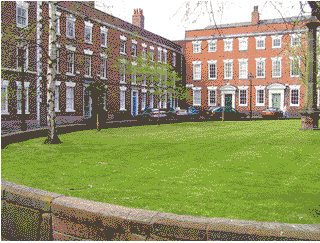I have been invited by the editors of Nature to submit a review/commentary article, currently on the theme of “Open Chemistry”. This is currently under the title “Horizons” though the actual format may change before publication. I wrote the article two weeks ago and it has been entered into the editorial process – I’m assuming that means it will appear in due course, the current date being ca. January 2008.
I have taken the opportunity of testing 4-5 aspects of the publication process:
- pre-printing it in Nature Precedings. Anyone is allowed to do this – the submissions are vetted before being released into view (and I suspect are primarily to make sure they are in scope for scientific discourse, not that they reach a given standrad of excitement). I have done this (it’s not necessary for the actual Nature submission process) and it will doubtless appear at some stage. If so I will note it on this blog if you haven’t found it already.
- Asking that the final manuscript be available under Creative-Commons. I have suggested CC-BY (this term was unknown to the Nature permissions office although it’s part of Nature Precedings, which are licensed under CC). They are going to return to me about CC-BY and I have also suggested SPARC author-addendum. Let’s see,
- Using images without restrictive copyright. I have therefore chosen 2 from Wikipedia (which uses GPL), one from CrystalEye whose data is Open Data and where I am the author, one from Jean-Claude Bradley’s SecondLife snapshots, and one from our screenshot of OSCAR3. There is no need to seek permission for any of these. However the Nature copyright office still feels it has to write to Wikipedia for permission. What? They are FREE, OPEN as in free beer. No permission required. How do I explain what the words on the GPL mean?
- reducing the citation count to zero. I provide one link to the blogosphere which then links to the rest of the blogosphere and I provide 2 other links to other information. For the rest I use copious links to Wikipedia, which should increasingly replace ritualised citation of methods, algorithms, fundamental work, etc. Of course this isn’t applicable to most current scientific publications, but it’s worth considering whether the reader is disadvantaged. I doubt it.
- posting into the institutional repository. I know that Southampton have got this to “one click”, but my previous experience with DSpace suggests I shall take a few more. I’ll time it.
I’ll also try to see how many clicks and links I get from wherever. Nature have a voting system but I don’t know whether they release download info on Precedings.
It will be quite fun to see how much the manuscript changes during the process. Even if I can’t re-use the final version perhaps I can mount a delta.
NOTE: The manuscript is now public: http://precedings.nature.com/documents/1200/version/1




October 1st, 2007 at 2:10 pm ePeter,Not to splash cold water on this, but one should keep in mind that the cyclohexinol story blew up because of Rychnovsky’s paper in a closed access journal (Org. Lett.). Ruchnovsky chose not to post this in a blog or even in an OA journal. The blogosphere only then picked up on it, and did greatly promote this subject to a wider audience. I think we are still a long way from web 2.0 being the publication access of choice for chemists for original research. For the time being, web 2.0 seems to be more suited as a more personal, chatty style of communication – sort of a hipper, more broadly authored, and more current version of Chemical and Engineering News (or Chemistry in Britain).Steve
October 1st, 2007 at 3:55 pm ePeter, I’ve given many examples of the issue of Data Quality on the blog. Some links are:http://www.chemspider.com/blog/?p=64
http://www.chemspider.com/blog/?p=164
http://www.chemspider.com/blog/?p=168
http://www.chemspider.com/blog/?p=137Also, today at the PubChem “Advisory Group” meeting I will be presenting on this issue to the attendees. I will put the presentation online later.
You should be aware that issues of Quality are showing up already and proliferate problems…for example, while the story about structure drawing quickly is “interesting” the problem is that the structures shown there have errors (at http://liquidcarbon.livejournal.com/13138.html)
It’s good to know that you appreciate our efforts around Data Quality. I’ve never seen a response to my data quality comments on your blog and I assumed that you would have been very interested in the work I’ve done on Wikipedia and taxol validation this past week. FYI, the link back to PubChem and the systematic name have now been edited on the DrugBox and the Wikipedia record is now correct.